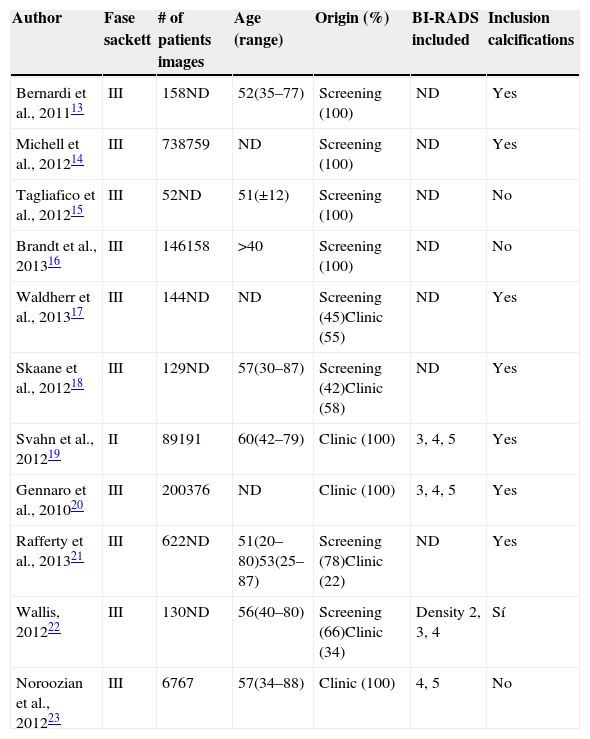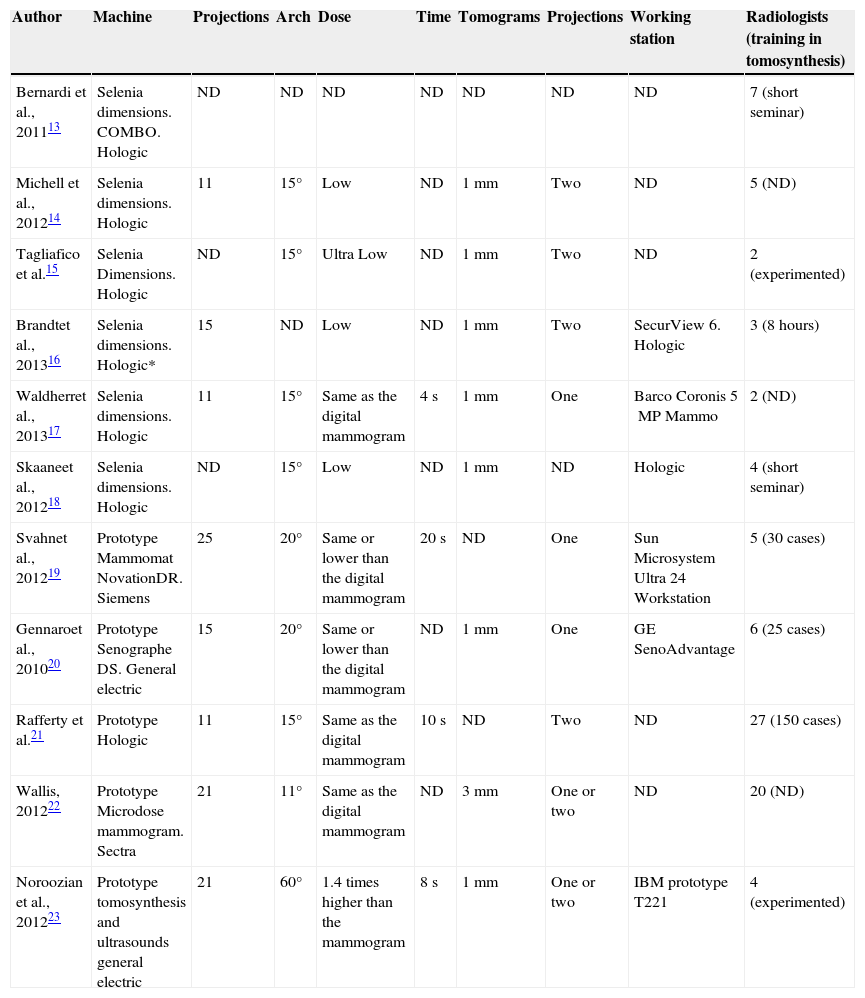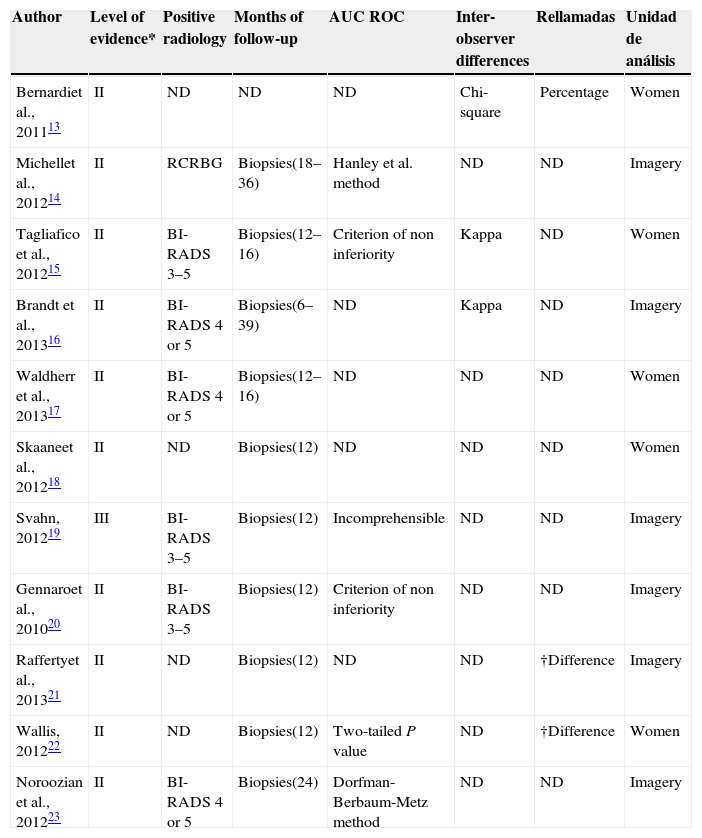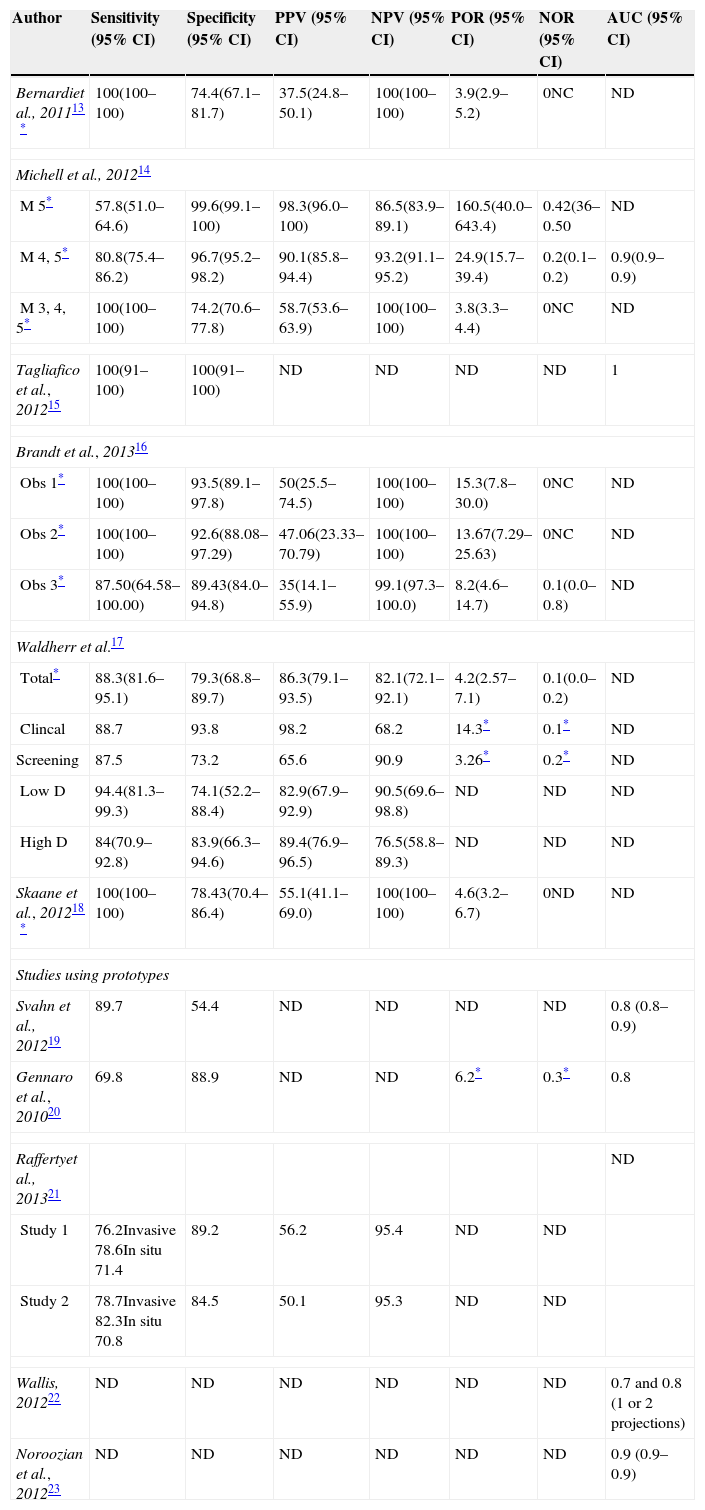To estimate and compare the diagnostic validity of tomosynthesis and digital mammography for screening and diagnosing breast cancer.
Material and methodsWe systematically searched MedLine, EMBASE, and Web of Science for the terms breast cancer, screening, tomosynthesis, mammography, sensitivity, and specificity in publications in the period comprising June 2010 through February 2013. We included studies on diagnostic tests and systematic reviews. Two reviewers selected and evaluated the articles. We used QUADAS 2 to evaluate the risk of bias and the NICE criteria to determine the level of evidence. We compiled a narrative synthesis.
ResultsOf the 151 original studies identified, we selected 11 that included a total of 2475 women. The overall quality was low, with a risk of bias and follow-up and limitations regarding the applicability of the results. The level of evidence was not greater than level II. The sensitivity of tomosynthesis ranged from 69% to 100% and the specificity ranged from 54% to 100%. The negative likelihood ratio was good, and this makes tomosynthesis useful as a test to confirm a diagnosis. One-view tomosynthesis was no better than two-view digital mammography, and the evidence for the superiority of two-view tomosynthesis was inconclusive.
ConclusionsThe results for the diagnostic validity of tomosynthesis in the diagnosis of breast cancer were inconclusive and there were no results for its use in screening.
Estimar y comparar la validez diagnóstica de la tomosíntesis y la mamografía digital para cribar y diagnosticar el cáncer de mama.
Material y métodosRealizamos una revisión sistemática consultando MedLine, EMBASE y Web of Science en el periodo de junio de 2010 a febrero de 2013. Los términos de búsqueda fueron: cáncer de mama, cribado, tomosíntesis, mamografía, sensibilidad y especificidad. Se incluyeron estudios de pruebas diagnósticas y revisiones sistemáticas. Dos investigadores hicieron la selección y evaluación. Usamos QUADAS 2 para valorar el riesgo de sesgo y los criterios NICE para el nivel de evidencia. Se hizo una síntesis narrativa.
ResultadosDe los 151 estudios originales identificados se seleccionaron 11 que incluyeron 2.475 mujeres. Su calidad fue baja, con riesgo de sesgo de selección y seguimiento, y limitaciones para aplicar sus resultados. Su nivel de evidencia no fue superior a II. La sensibilidad de la tomosíntesis osciló entre el 69 y el 100% y la especificidad entre el 54 y el 100%. El cociente de probabilidad negativo fue bueno, lo que la convertiría en una prueba de confirmación diagnóstica. La tomosíntesis con una proyección no fue superior a la mamografía digital con 2, y con 2 proyecciones los resultados no fueron concluyentes.
ConclusionesLos resultados de la validez diagnóstica de la tomosíntesis en el diagnóstico del cáncer de mama no fueron concluyentes, y no los hubo para usarla en el cribado.
Artículo
Comprando el artículo el PDF del mismo podrá ser descargado
Precio 19,34 €
Comprar ahora












